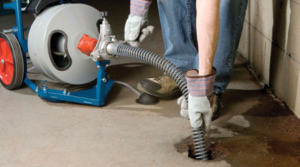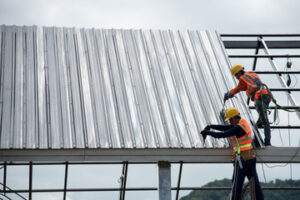Pests are unwanted organisms that damage, devalue, or spoil crops, food stores, gardens, lawns and human structures. They also spread diseases and disrupt terrestrial and aquatic ecosystems.
Prevention is the best way to minimize pests. Keep storage areas clean and remove garbage regularly. Also, wipe down counters and vacuum frequently. Contact Pest Control Morristown NJ now!

Preventative pest control is the practice of preventing pests from invading homes and businesses. It involves regularly inspecting a property for signs of infestation, removing the conditions that allow pests to thrive and practicing basic sanitation techniques. It also includes implementing exclusion strategies such as installing screens in windows and keeping doors shut, as well as limiting the amount of food scraps that are left outside the home or business. Preventive pest control can be much more effective than eradicating pests after they’ve already established themselves on a property, as it can significantly reduce the number of invasive pests that invade a building.
In order to be a successful preventative pest control, it’s important for people and businesses to understand what factors can lead to an outbreak of pests. This can include understanding how pests breed, what conditions they prefer and where they tend to thrive. Knowing these factors can help individuals and companies proactively prevent pests from establishing themselves around their property, which will help to save both time and money in the long run.
Prevention can include practices such as storing and transporting artifacts and materials in sealed containers, maintaining proper temperature, moisture and humidity levels in storage and display areas, cleaning up spills and crumbs, and ensuring that trash is disposed of properly. It also entails reducing the risk of pests infiltrating buildings by making sure that doors and windows are kept closed, trash is placed in bins with tight-fitting lids, and building ventilation systems are working properly.
Other prevention methods may involve modifying the environment to make it less attractive to pests, such as removing water sources like bird feeders and ensuring that woodpiles are located away from buildings. Pests can also be prevented by implementing sanitary procedures that prevent them from spreading, such as washing food containers before throwing them in the garbage, and ensuring that drains are free of obstructions.
Other prevention measures that can be implemented include the use of trap crops to concentrate pests, utilizing predators to eliminate them and releasing biological controls such as parasites or pathogens that target the infestation and cause it to die out. These techniques can be less invasive than treating with chemical pesticides, which can pose a health and safety concern when handled improperly.
Suppression
Once preventive measures are in place, the goal of pest control is to reduce the number of pests below a threshold that causes economic damage. This stage of pest management is often called suppression. Suppression tactics include physical barriers, cultural practices and a variety of biological controls. They may also involve chemical applications of the type described on our IPM Tactics page.
Monitoring and proper identification of pests are critical to the success of all control strategies. This is generally referred to as scouting (though it is sometimes considered inspection or sampling). Scouting should be routine and cover the whole growing season. Records of pest incidence and distribution should be kept for each field or site. The information from these records is the basis for decisions regarding crop rotation, thresholds and suppressive actions. In addition, these data are necessary for evaluation of the impact of pest control methods.
Many factors naturally affect the growth of pest populations. These include temperature, day length, humidity and other weather conditions that influence insect development. Diseases and parasites also suppress pest populations by reducing their rate of feeding or reproduction or killing them. Resistant varieties of crops, wood or plants make them less attractive to some pests.
Another natural force that influences the size of a pest population is competition from other organisms for food and habitat. This is usually a temporary setback for the pest population. For example, weeds compete for sunlight and water and can limit the growth of desirable crops. Other organisms, such as predators and pathogens, may also interfere with pest populations by killing them or limiting their numbers.
Biological control is the use of naturally occurring enemies of a pest, such as predators, parasitoids, and competitors to reduce pest populations without the need for chemical controls. Biological control includes conserving these natural enemies in fields and greenhouses, purchasing and releasing enemies of a pest in sufficient numbers to overwhelm the pest population, and introducing new enemies into the area where the pest occurs.
In addition to being environmentally sound, this form of pest control is cost effective and has a lower risk of developing pesticide resistance than conventional methods. It is part of an integrated pest management program (IPM).
Eradication
A pest is any organism that reduces the availability, quality or value of a human resource. The organisms may directly damage human property or indirectly affect people through decreased food supply, disease, or reduced income or beauty. A pest may be a plant or animal.
Pest control aims to reduce the number of pests below a threshold at which they are considered to cause unacceptable harm. This is often achieved by a combination of methods, including cultivation practices that discourage pests, crop varieties that are resistant to damage, biological controls (such as insects or diseases that prey on or parasitize the pest), monitoring, and application of chemical pesticides when needed.
As modern pesticides were developed, it became clear that one product alone would not solve all pest problems. The use of a single pesticide too frequently resulted in the development of resistant pests. Scientists began to develop a concept that is now called integrated pest management (IPM). An IPM plan begins with careful evaluation of each infestation. The life cycle of the pest, possible damage, natural enemies, and effects of weather are all considered before a treatment strategy is implemented.
Some treatments involve replacing the air in a building with an inert gas such as nitrogen or carbon dioxide, so that the pests die from lack of oxygen. This can be a very effective way to eradicate pests that are difficult or impossible to reach using other methods, such as sanding and filling, but it is expensive and impractical for many buildings.
In the past, there was a great deal of pressure to eradicate pests as soon as they were detected. However, this has proved to be an unsuccessful approach for most species. It is more desirable to use primary control measures such as good ventilation, simple housekeeping, and monitoring. A thorough survey by a qualified professional should be undertaken prior to any chemical treatment of timbers for deathwatch beetle infestation, to identify the location of active infestation and to locate areas of water penetration. Attempts to eradicate an infestation with chemical treatments without first addressing the underlying problem will most likely fail and may be harmful to both the historic fabric and the health of the occupants.
Natural Forces
Natural forces are non-toxic techniques that utilize living organisms to suppress pest populations or make them less damaging. They include predators, parasitoids, and pathogens that can kill or reduce the number of pests, or prevent them from attacking plants. These organisms may also produce chemicals that deter or repel pests, interfere with their ability to reproduce, or change their physical characteristics so they are harder to attack.
Agricultural practices that increase the density of natural enemies can decrease pest densities and damage. This is often referred to as “bottom-up” control. Examples of these practices include intercropping crops to limit the number of places where pests can find a host plant, planting trap crops (such as zinnias) to attract and concentrate pests away from main crop fields that will be treated with pesticides, and reducing habitat fragmentation by managing water levels to minimize insect overwintering sites.
Many species of birds, reptiles, amphibians, fish, and mammals prey on insects or insect-like pests. Similarly, some vertebrate predatory mites and other arthropod predators feed on a variety of pests or can be used to control specific pests, such as the predatory mite Amblysieus swirskii which feeds on thrips and whiteflies, and the caterpillars and beetles of the Bacillus thuringiensis subsp. kurstaki strain that feeds on a wide range of larvae but is particularly effective against the western corn rootworm.
Other kinds of natural enemies, such as bacteria and fungi, can reduce or inhibit pests by poisoning them. These organisms can be introduced from another location to establish a permanent population, or they can be mass-reared and then released on a seasonal basis. Some of these biological controls can be quite effective against specific pests, such as the alfalfa weevil in North America where several parasitoids and a pathogen were successfully introduced.
Weather conditions, especially temperature, day length, and humidity, can influence pest activity and their rates of reproduction. They can also indirectly affect the pests by affecting the growth of their hosts. A population of plant-eating pests can be greatly increased or decreased by rain, freezing temperatures, drought, or other unusual weather events.




